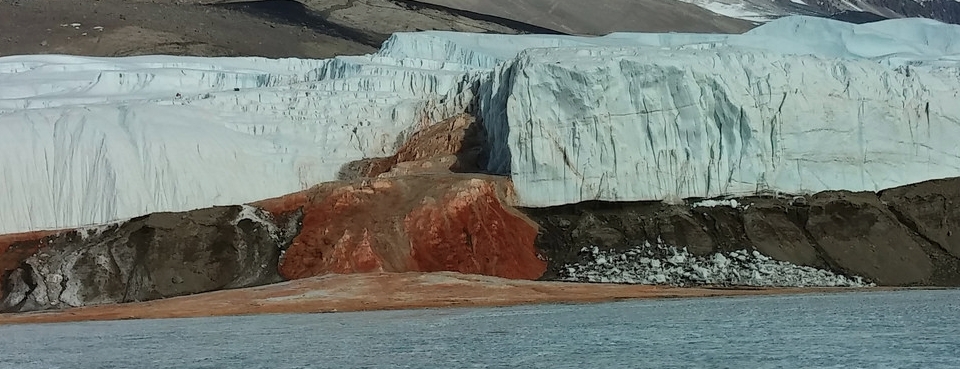New Scientist
Image: DLR_de
Antarctica’s Blood Falls are well named. There, the white tongue of the Taylor Glacier is stained crimson, as if the ice itself has been wounded. The iron in the water – which oxidises to give the falls their vivid red colour – comes from the weathering of the bedrock beneath the ice, a process enhanced by microbial action.
“This unique feature is much more than a curiosity – it is a portal into the Antarctic subsurface, a hint at what lies beneath,” says Jill Mikucki at the University of Tennessee in Knoxville.
We already know that there is liquid water – and life – in some of the lakes beneath Antarctica’s ice. Blood Falls is a sign of something else: that the ground, too, holds liquid water, and that it may have extensive microbial activity. The falls are perhaps the only place where this groundwater comes to the surface. They flow just a few times a decade, possibly driven by changes in the weight of the ice above.
Now a study by Mikucki and her colleagues has found this groundwater could be surprisingly extensive. They used an electromagnetic sensor attached to a helicopter to map electrical resistivity in the relatively ice-free Taylor Valley, to the east of Blood Falls. Read more on newscientist.com…








